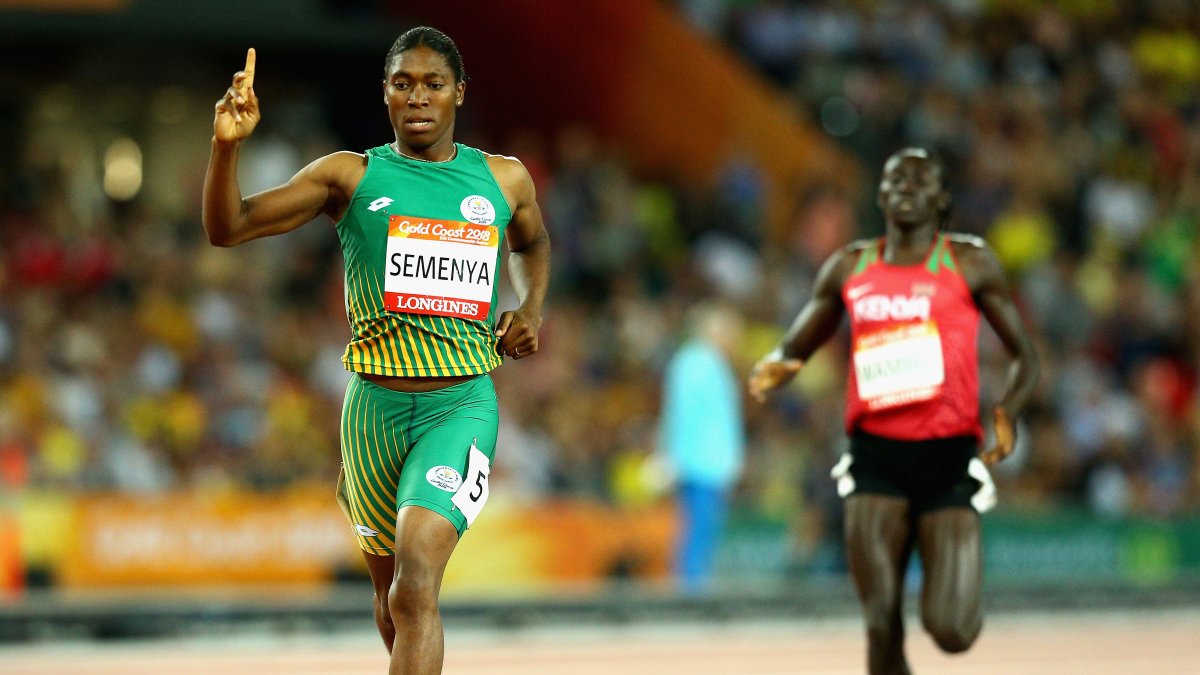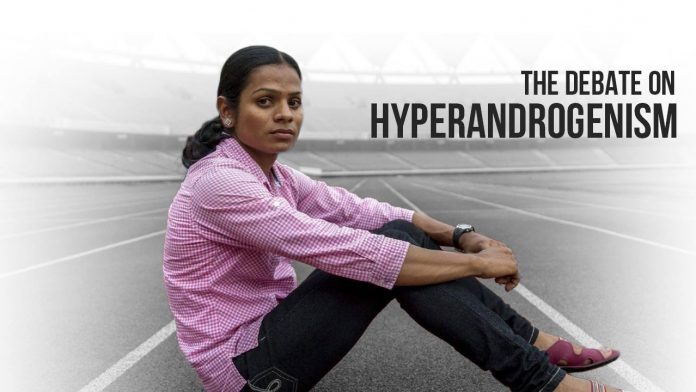Begin typing your search above and press return to search.
Athletics
Run Like A Girl

Caster Semenya is fast. Some even say she’s too fast. And in a few days, she’ll get to hear if her speed will be the undoing of what she does best: run. The Court of Arbitration for Sport (“CAS“) is days away from its verdict on her challenge to the validity of the Eligibility Regulations for the Female Classification (Athletes with Differences of Sex Development) (“DSD Regulations“) issued by the International Association of Athletics Federations (IAAF), and the outcome could be anybody’s guess. The DSD Regulations offer Semenya, and so many others like her, a new kind of obstacle to women’s sport, as if there aren’t enough already. Reasoning that testosterone levels have a significant impact on one’s physical ability, they indicate that women like Semenya produce so much more testosterone – a hormone generally associated with men – than “normal” women, that certain track competitions between the two would be unfair. A CAS decision in favour of upholding the DSD Regulations would mean that if Semenya chooses to compete in these women’s events, she will have to reduce her natural testosterone levels using external means, frequently get tested to prove that the hormone is within a “normal range”, and finally, run in a body she’s not used to. If changing her biology to her own detriment sounds a tad bit preposterous, there happens to be another option: she could compete without changing herself one bit, only she would have to compete with men. And if that sounds even worse, she could simply call it quits.  Hyperandrogenism is a medical condition characterized by excessive levels of androgens. As a result, the IAAF came up with the current DSD Regulations, whose only improvement over the earlier rules is that they apply only to those events between 400 metres and a mile, as opposed to all track events. The IAAF presented new evidence to substantiate the new DSD Regulations, and Chand did not pursue the challenge further, as she didn’t compete in these events. Yet, many argue that the rationale behind both sets of rules remains the same. So much so, it can perhaps be claimed that the DSD Regulations are merely Hyperandrogenism Regulations-lite. And many women, like Semenya, are bound to be affected. Also Read: i) Do the IAAF’s new regulations for female athletes present a bias of sorts? ii) The Hyperandrogen conundrum Despite the criticism, the IAAF has not budged once on its stance, that an unregulated female sporting space can end up disastrous for “normal” women who are not blessed with high testosterone levels. The dystopian end of women’s sport that the IAAF envisions is filled with women who produce abnormally high testosterone, effectively excluding all “normal” women from sport.
Hyperandrogenism is a medical condition characterized by excessive levels of androgens. As a result, the IAAF came up with the current DSD Regulations, whose only improvement over the earlier rules is that they apply only to those events between 400 metres and a mile, as opposed to all track events. The IAAF presented new evidence to substantiate the new DSD Regulations, and Chand did not pursue the challenge further, as she didn’t compete in these events. Yet, many argue that the rationale behind both sets of rules remains the same. So much so, it can perhaps be claimed that the DSD Regulations are merely Hyperandrogenism Regulations-lite. And many women, like Semenya, are bound to be affected. Also Read: i) Do the IAAF’s new regulations for female athletes present a bias of sorts? ii) The Hyperandrogen conundrum Despite the criticism, the IAAF has not budged once on its stance, that an unregulated female sporting space can end up disastrous for “normal” women who are not blessed with high testosterone levels. The dystopian end of women’s sport that the IAAF envisions is filled with women who produce abnormally high testosterone, effectively excluding all “normal” women from sport.
Needless to state, the DSD Regulations have been met with considerable critique.
For starters, they apply only to women or intersex athletes, but not men. No man is ever asked to compete with women if he has low testosterone levels, and no man is asked to reduce these levels if he produces too much of it. It is almost as if men’s victories come unconditionally, while those of women are constantly met with suspicion. Further, in attempting to implement a clear-cut, “scientific” rule, the IAAF comes off as almost myopic as far as their social ramifications are concerned.With these shortcomings, it is unsurprising that even the United Nations Human Rights Council has called the DSD Regulations “unnecessary, humiliating and harmful”. Agreed, men and women largely produce differing levels of testosterone, and some women tend to produce more of the hormone than others. However, whether this provides adequate reason to exclude their unaltered bodies from women’s competition remains contentious. In fact, some sports science experts have criticised the DSD Regulations for failing to demonstrate convincingly that high testosterone levels offer a performance advantage vastly greater than that offered by longer legs or better lung capacity. These questions are similar to those already raised at CAS in 2015 by Indian sprinter, Dutee Chand, who had challenged the Regulations Governing Eligibility of Females with Hyperandrogenism to Compete in Women’s Competition (“Hyperandrogenism Regulations“). These rules preceded the DSD Regulations, mandated testosterone tests for all track events, and were finally struck down for the IAAF’s failure to provide adequate evidence necessitating such tests.If pushed to a male event, would a woman be considered ‘woman enough’? Would her gender identity be of any consequence? How would it impact her social life outside of sport?
 Hyperandrogenism is a medical condition characterized by excessive levels of androgens. As a result, the IAAF came up with the current DSD Regulations, whose only improvement over the earlier rules is that they apply only to those events between 400 metres and a mile, as opposed to all track events. The IAAF presented new evidence to substantiate the new DSD Regulations, and Chand did not pursue the challenge further, as she didn’t compete in these events. Yet, many argue that the rationale behind both sets of rules remains the same. So much so, it can perhaps be claimed that the DSD Regulations are merely Hyperandrogenism Regulations-lite. And many women, like Semenya, are bound to be affected. Also Read: i) Do the IAAF’s new regulations for female athletes present a bias of sorts? ii) The Hyperandrogen conundrum Despite the criticism, the IAAF has not budged once on its stance, that an unregulated female sporting space can end up disastrous for “normal” women who are not blessed with high testosterone levels. The dystopian end of women’s sport that the IAAF envisions is filled with women who produce abnormally high testosterone, effectively excluding all “normal” women from sport.
Hyperandrogenism is a medical condition characterized by excessive levels of androgens. As a result, the IAAF came up with the current DSD Regulations, whose only improvement over the earlier rules is that they apply only to those events between 400 metres and a mile, as opposed to all track events. The IAAF presented new evidence to substantiate the new DSD Regulations, and Chand did not pursue the challenge further, as she didn’t compete in these events. Yet, many argue that the rationale behind both sets of rules remains the same. So much so, it can perhaps be claimed that the DSD Regulations are merely Hyperandrogenism Regulations-lite. And many women, like Semenya, are bound to be affected. Also Read: i) Do the IAAF’s new regulations for female athletes present a bias of sorts? ii) The Hyperandrogen conundrum Despite the criticism, the IAAF has not budged once on its stance, that an unregulated female sporting space can end up disastrous for “normal” women who are not blessed with high testosterone levels. The dystopian end of women’s sport that the IAAF envisions is filled with women who produce abnormally high testosterone, effectively excluding all “normal” women from sport. With their challenges, Semenya and Chand have revealed to us what’s been wrong with sport all along: its incessant need to draw a fine line between male and female categories, where no such line can be conclusively established. If sport is socialized using rigid gender binaries, but regulated using rigid sex binaries, the result is nothing but messy. Especially in a world that is still coming to terms with sex and gender being a whole lot messier. In the immediate case however, a few things are clear: Semenya was born a woman, raised as a woman, and identifies as a woman. All she asks now, is that she can run as one. (This article first appeared on The Sports Law and Policy Centre written by Kruthika NS. She can be reached at [email protected])One can’t help but draw a parallel to the sporting world back in the ’50s, when intrusive gender tests were conducted on merely female participants, just to make sure no man was disguised as a woman to hit the medal jackpot.
Next Story






